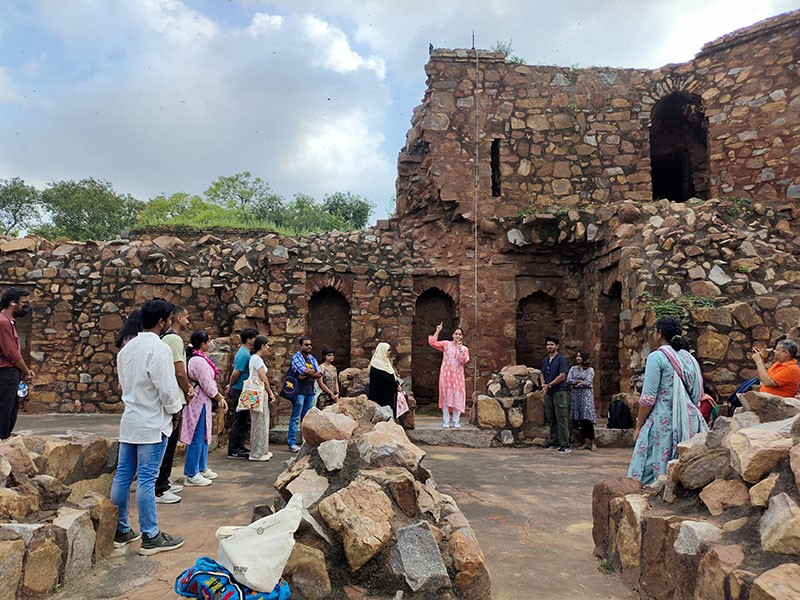 Gatha Tales
Gatha Tales
Gatha - Tales of India: Exploring Culture, Heritage, and the Divine Feminine
Independent research scholars Brishti Mitra and Tripti Soni, who did their Masters in Archaeology and Heritage Management from Ambedkar University Delhi, share about their initiative Gatha- Tales of India, an organisation that aims to raise awareness about the country's history, heritage, traditions and culture
India’s history, heritage, and culture have long been a mosaic woven from numerous traditions, philosophies, and stories. Through our initiative, Gatha - Tales of India, we aim to preserve and present this intricate fabric, offering a fresh lens on the timeless tales of Indian heritage.
Having completed our Masters in Archaeology and Heritage Management from Ambedkar University Delhi, we are driven by the urge to document and share India’s Sanskriti and Dharohar. In a rapidly globalizing world, our stories often serve as bridges between past and present, as well as tradition and modernity, making us proud of our identity.

The Journey of Gatha - Tales of India
Gatha, derived from the Sanskrit word for 'verse' or 'song,' sung in a meter, as a part of Sruti tradition of India. It reflects our aspiration to retell India's stories in a manner that resonates with audiences, both digitally and physically. In our fast-paced world, we believe that the preservation of cultural legacies is crucial for ensuring that future generations remain connected to their roots and take pride in it.
Our platform explores India's diverse heritage through curated social media series, blog posts, and community-based initiatives like heritage walks and baithaks (informal discussions). We strive to bring India’s less-explored narratives to the forefront, showcasing both well-known and hidden stories through an engaging and creative medium.
This labour of love officially began on World Heritage Day (18th April 2023). Our intent is simple yet heartfelt, to keep India’s ancient and ongoing tales alive in the collective consciousness. This passion is reflected in our recent explorations of the Durga Puja, Navratri, and the celebration of the Divine Feminine, which we believe encapsulates the essence of India’s unique relationship with nature, history, and community.
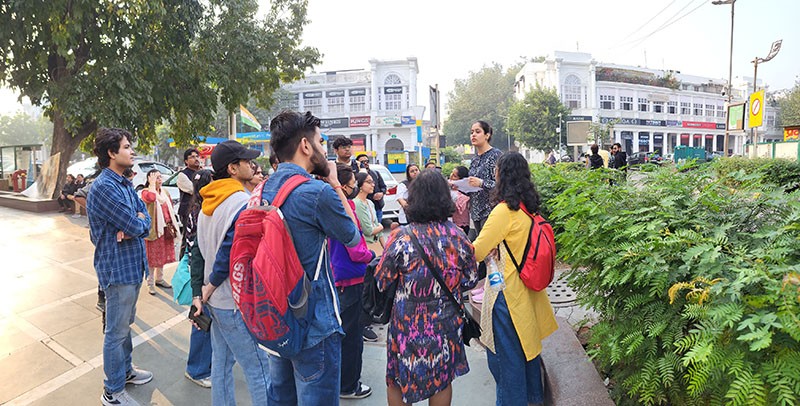
The Divine Feminine: Shakti and Her Symbolism
The concept of Shakti or the Divine Feminine is central to Indian philosophy and culture. Rooted in ancient Vedic scriptures, or even before, and prevalent across various spiritual practices, Shakti represents the primal, creative force of the universe. Durga, Kali, and Parvati are manifestations of this powerful feminine energy, worshipped during festivals like Navratri and Durga Puja. These festivals are not just celebrations of mythology; they are an acknowledgment of the feminine energy present in all aspects of life.
Historically, goddess worship in India dates back to the Upper Paleolithic age, with artefacts of female figurines uncovered near Prayagraj and in sites like Mehrgarh (5500 BCE). These finds suggest that female deities were revered for their association with fertility and protection.
The Indus Valley Civilization too held the goddess in high esteem, with archaeological evidence of mother goddess figurines and seals depicting her symbolic power. This rich tradition of goddess worship evolved into the celebration of Shaktism, where the divine feminine is honoured for her role in creation, preservation, and destruction.
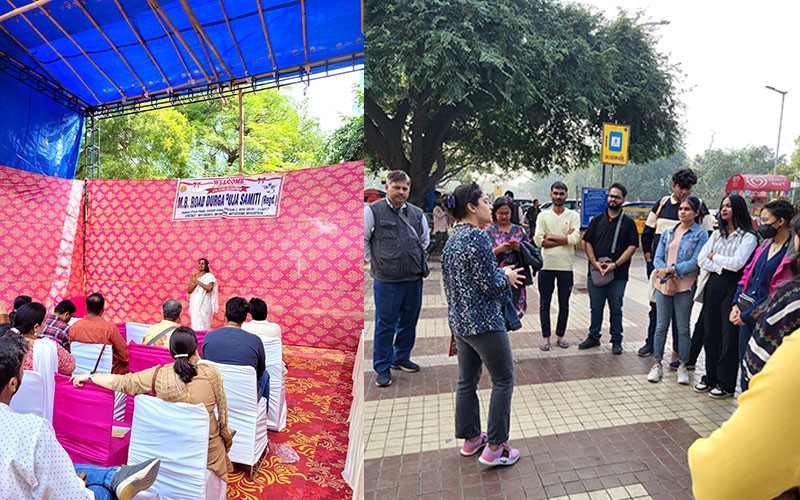
Durga Puja: A Celebration of Nature and the Feminine Force
Durga Puja, especially in West Bengal, is more than a religious event. It is a cultural, ecological, and social phenomenon that underscores the harmonious relationship between humans and nature. The rituals during Durga Puja—like the Nabapatrika or Kola Bou worship—highlight this connection.
The Nabapatrika involves the worship of nine plants, representing the nine forms of Durga, each symbolizing aspects of nature and life. For instance, banana plants are associated with fertility, while turmeric plants symbolize prosperity. Interestingly, each of these plants have been researched about to be found to have medicinal properties.
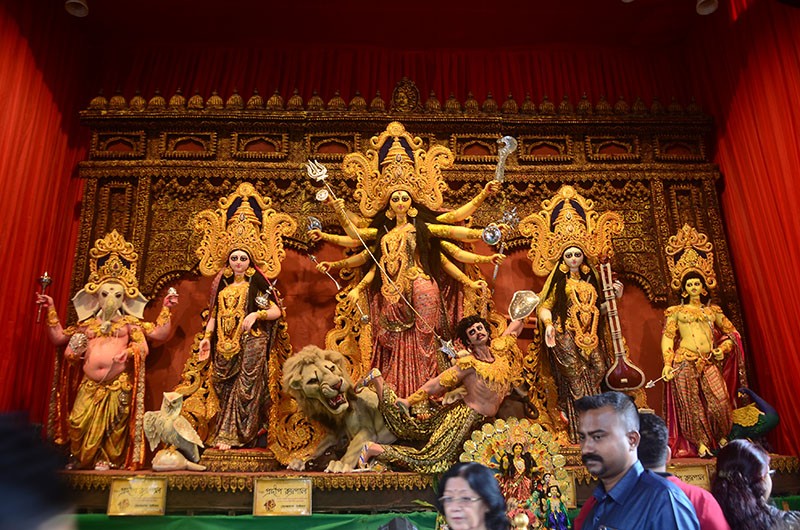
This ritual, dating back to agrarian societies, signifies the Goddess as the nurturer and protector of the earth, embodying the regeneration of nature. In addition to the flora, the symbolism of Durga’s family and their animal vahanas (vehicles)—like the lion, owl, mouse and peacock—reminds us of the delicate balance of ecosystems. Durga’s victory over Mahishasura, the demon symbolizing chaos and ignorance, is a metaphor for the victory of life over death, order over chaos, and nature’s seasonal renewal.
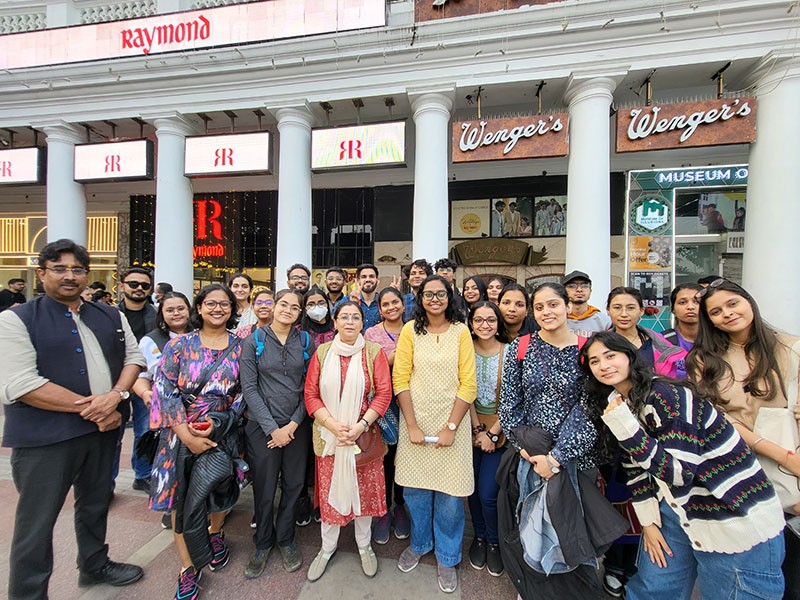
Navratri: A Journey from Darkness to Light
While Durga Puja is grand in its visual and ritualistic elements, Navratri, celebrated across India, is a deeply spiritual journey. The nine days of Navratri represent the transformation of the world from ignorance to knowledge, from darkness to light. Each of Durga’s nine forms—Shailaputri, Brahmacharini, Chandraghanta, Kushmanda, Skandamata, Katyayani, Kalaratri, Mahagauri, and Siddhidatri—embody an aspect of cosmic and geological evolution and the cycles of life.

The festival’s fasting practices, wherein only sattvic foods (fruits, dairy, and grains) are consumed, reflect a period of purification, not just of the body, but also of the mind and soul. By eliminating foods like onion and garlic, which are classified as tamasic (agitating), devotees focus on spiritual growth. This observance also aligns with the seasonal changes in October when the body requires detoxification to prepare for the coming winter.
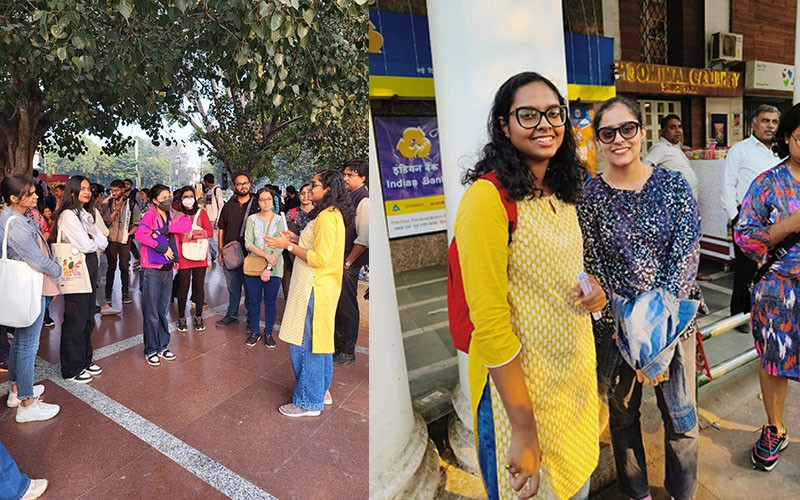
Philosophy, History, and Community
Both Durga Puja and Navratri are deeply linked to India’s community and history. Historically, Durga Puja was a private, aristocratic affair until the late 18th century when it became a community-based festival in Bengal. Over time, it became a platform for cultural expression, political resistance, and social unity. During India’s struggle for independence, public celebrations of Durga Puja were imbued with nationalist fervour. Today, it stands as a unifying force, bringing together people from all walks of life. Similarly, Navratri brings communities together across regions.
The Ecological Significance of Shakti Worship
One of the most beautiful aspects of Shakti worship is its emphasis on the interconnectedness of all life. Festivals like Durga Puja and Navratri are intrinsically tied to nature, both in their symbolism and in practice. From the use of eco-friendly materials in the crafting of idols to the worship of plants during rituals, these festivals remind us of our responsibility toward the environment. The immersion of Durga’s clay idols at the end of the festival is symbolic of returning to the earth, a cycle of creation and dissolution that mirrors the natural world. Today, as we face environmental challenges, these ancient practices offer valuable lessons. Festivals that honour nature and the feminine force can inspire modern sustainability efforts, reminding us to protect the earth’s resources as the goddess protects her devotees.
A Legacy of Empowerment
Through our work at Gatha - Tales of India, we seek to highlight the timeless relevance of these festivals and the philosophies they embody. The Divine Feminine, in her many forms, symbolises strength, nurturing, and resilience. As we retell these ancient stories, we hope to inspire a deeper understanding of India’s heritage and culture, emphasising the need for balance—between tradition and modernity, between nature and progress.
Durga and Shakti are not just mythical figures; they are living embodiments of the feminine force in every aspect of life—guiding, protecting, and empowering communities across time. This eternal cycle of life and renewal is as much a part of our heritage as it is a call to action for the future.
With the sad state of affairs around, where a feminine has to fight not only the demons but also for the basic right to justice, we think Durga Puja, worshipping the divine feminine becomes meaningless if we, as a society, can not provide conducive atmosphere for the mortal feminines to thrive. Overcoming the Mahishasura within ourselves, defeating ignorance should be our motto this Pujo, for which understanding the basic principles of it is necessary. Femininity is what we call Prakriti and without it, nothing survives, progeny ends, humanity collapses. Not Dasapraharanas (the ten weapons), like Durga, but at least provide justice to our own Durgas.
Join us in this journey of rediscovery and celebration by following our work on @gathatalesofindia on Instagram or Gatha- Tales of India on Facebook where history, culture, and stories come alive.
Support Our Journalism
We cannot do without you.. your contribution supports unbiased journalism
IBNS is not driven by any ism- not wokeism, not racism, not skewed secularism, not hyper right-wing or left liberal ideals, nor by any hardline religious beliefs or hyper nationalism. We want to serve you good old objective news, as they are. We do not judge or preach. We let people decide for themselves. We only try to present factual and well-sourced news.







